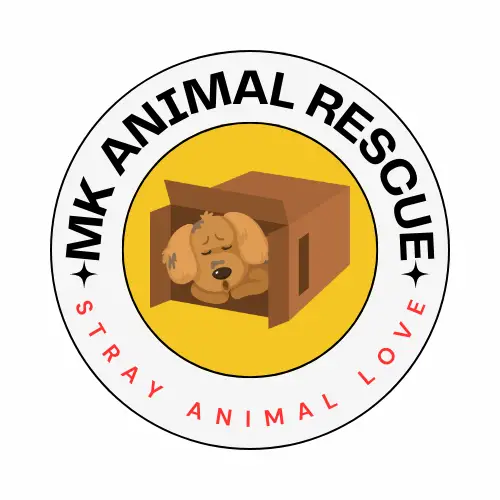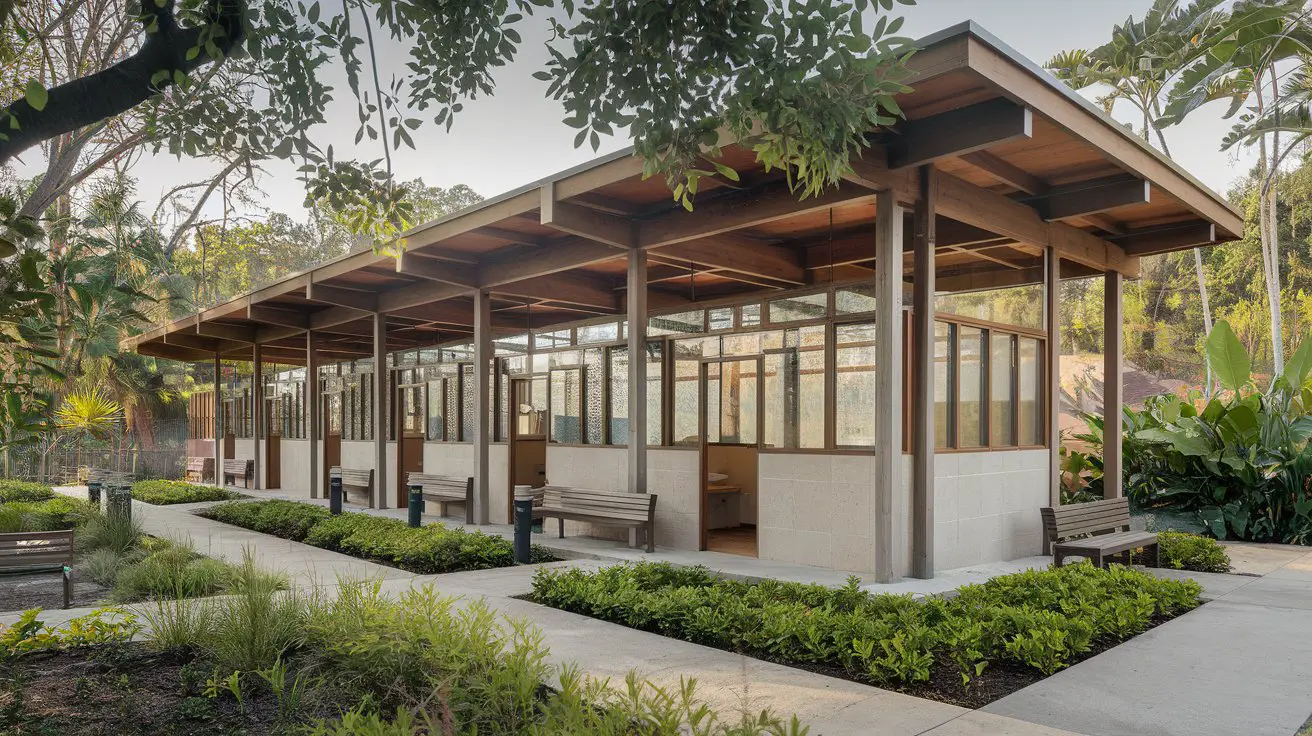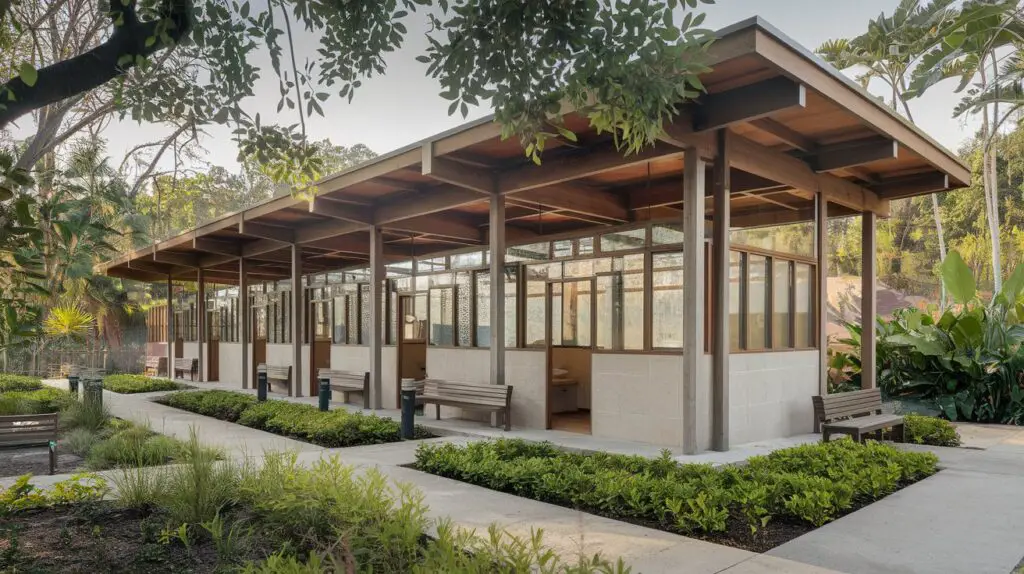
Animal shelters are more than just places for housing pets in need—they are sanctuaries where animals can find care, love, and the promise of a new beginning. Thoughtful design can transform an animal shelter into a warm, inviting, and functional space that benefits both the animals and the people who visit. From creative layouts to eco-friendly additions, a well-designed animal shelter can make a world of difference in the lives of the animals and the community.
Whether you’re designing a dog rescue facility, pet hotel, or animal sanctuary, every detail matters. Functional spaces like kennels, adoption rooms, and volunteer areas should merge seamlessly with an aesthetic that evokes warmth and hope. These ideas focus on modern, innovative designs to make animal shelters comfortable, attractive, and efficient. Explore these 10 inspiring concepts to create a haven that animals and humans alike will adore.
1. Eco-Friendly Animal Shelter
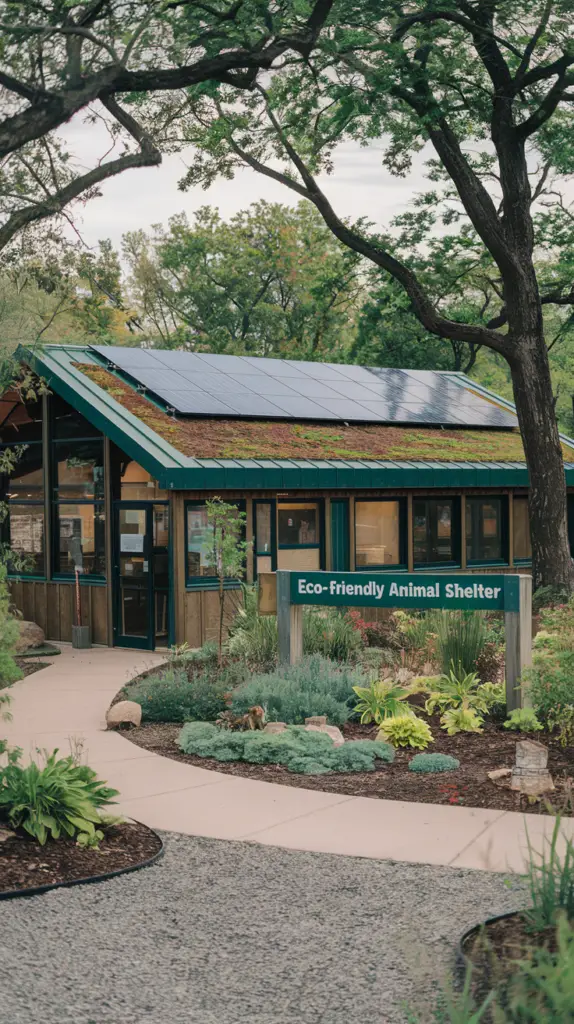
An eco-friendly design incorporates sustainable materials and practices to reduce the environmental footprint of the shelter.
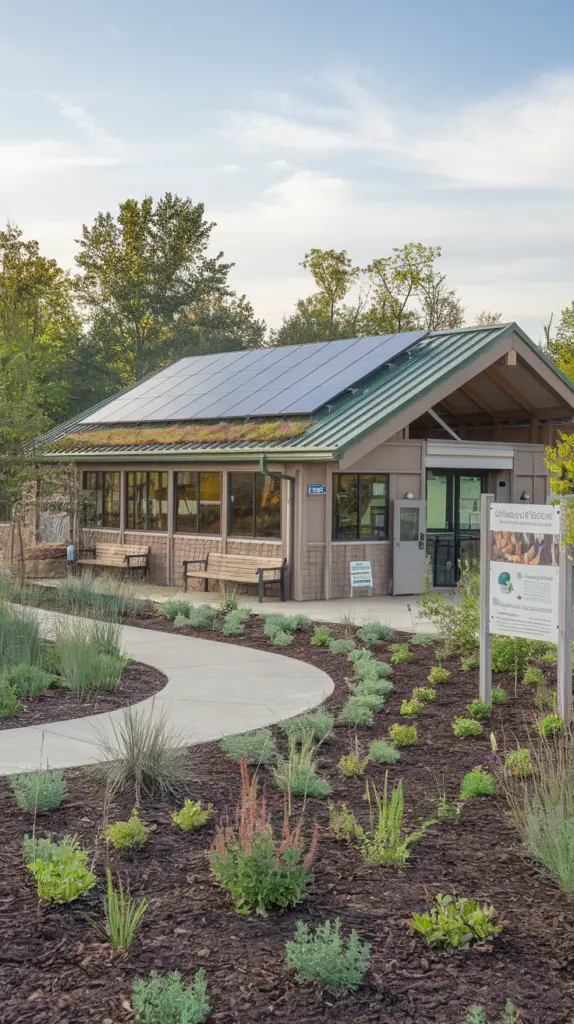
Solar panels can provide clean energy, while rainwater harvesting systems help with landscaping and cleaning. Use recycled materials for construction and repurpose old furniture for the interiors.
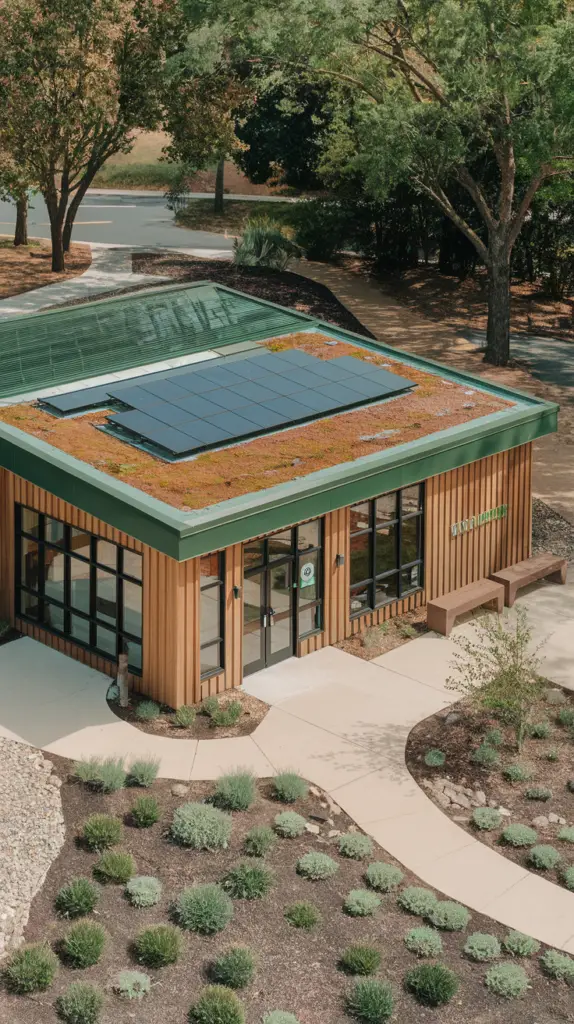
Adding greenery, such as indoor plants or vertical gardens, improves air quality and creates a soothing atmosphere. Low-VOC paints and natural lighting enhance the shelter’s aesthetic while keeping the environment safe for pets and humans.
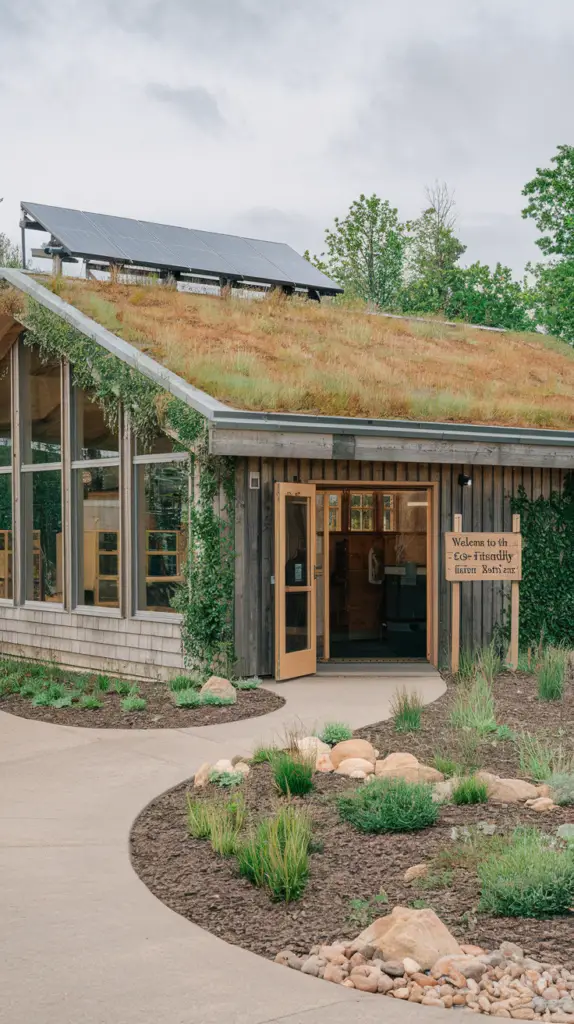
This design not only promotes sustainability but also showcases the shelter’s commitment to environmental stewardship, attracting environmentally-conscious adopters and donors.
2. Open-Concept Adoption Spaces
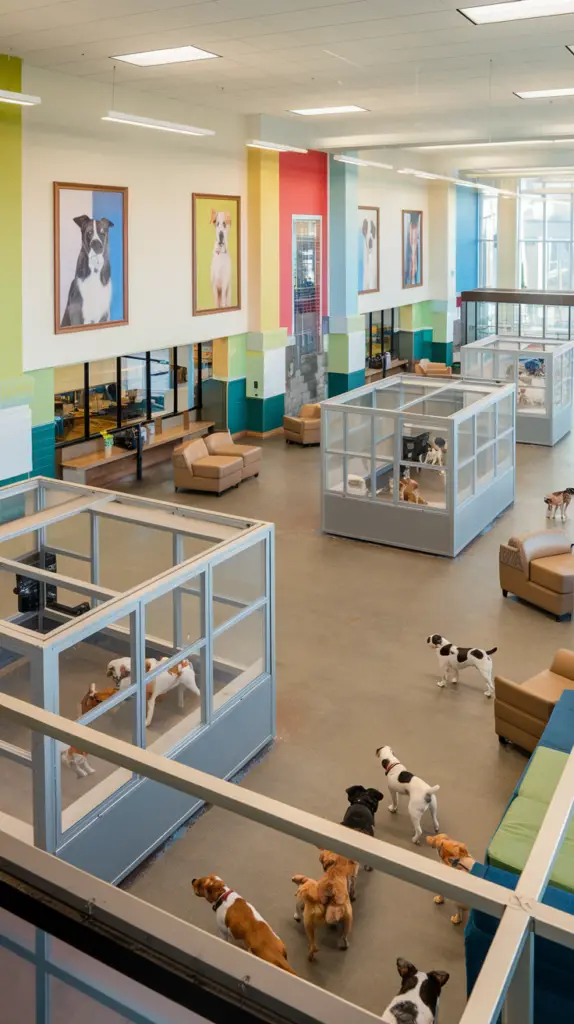
Open-concept adoption spaces create a welcoming environment for visitors. Instead of traditional cages, use large, transparent enclosures that allow potential adopters to interact with pets more freely. Add comfortable seating areas where families can bond with animals.
Bright lighting, cheerful wall colors, and pet-friendly furniture enhance the atmosphere. Personalize the space with framed animal portraits or adoption success stories to foster emotional connections.
This approach encourages more adoptions by reducing stress for both pets and adopters while making the process more enjoyable.
3. Pet Hotel-Style Kennels
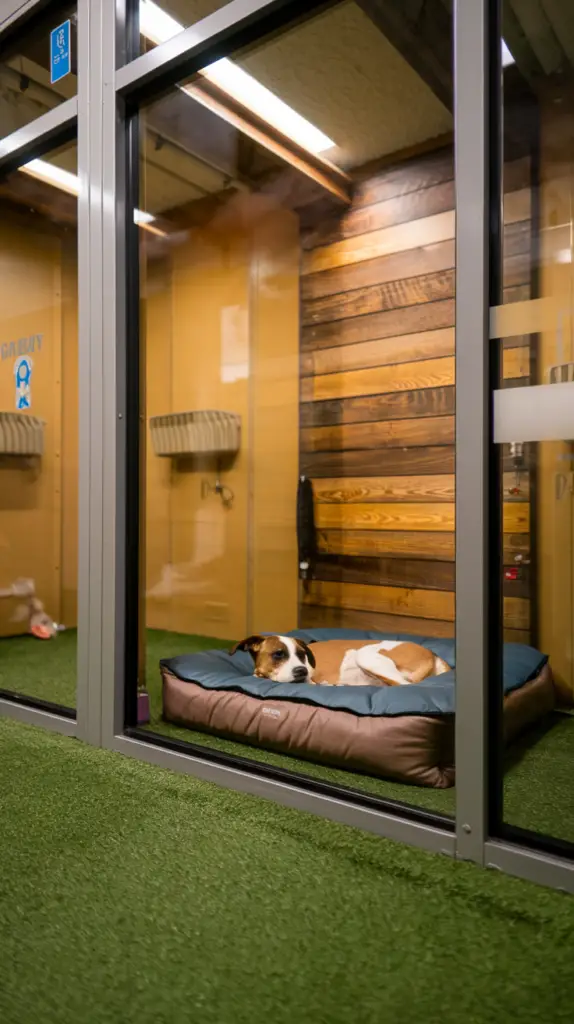
Transform shelter kennels into cozy pet hotel-style suites. Use warm colors, soft bedding, and private partitions to give each animal a sense of security. Add glass fronts for better visibility and a more modern aesthetic.
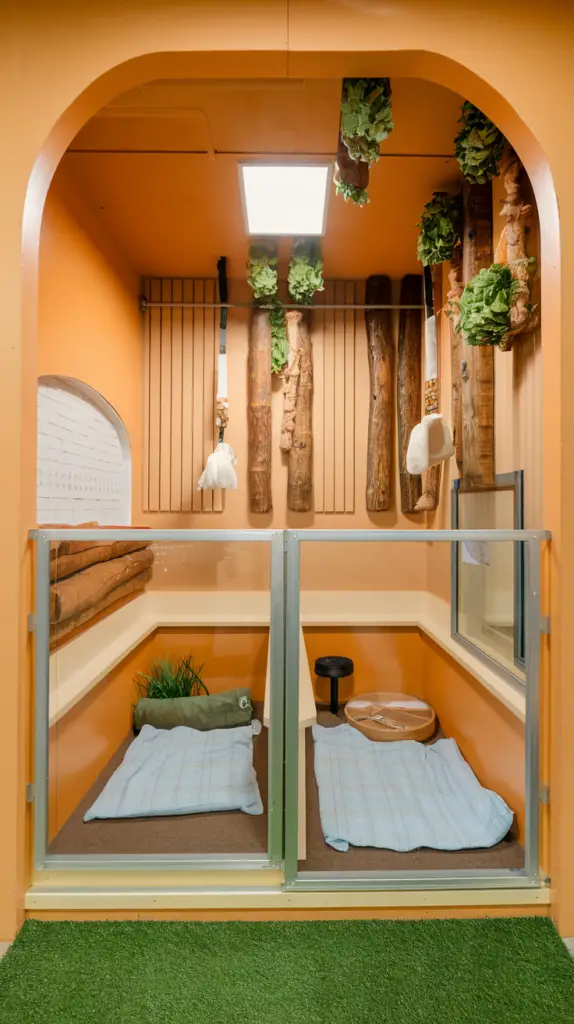
Incorporate soundproofing to reduce noise and stress. Provide enrichment toys and natural elements like wooden accents or faux grass. Highlight these features in promotional materials to attract adopters and donors.
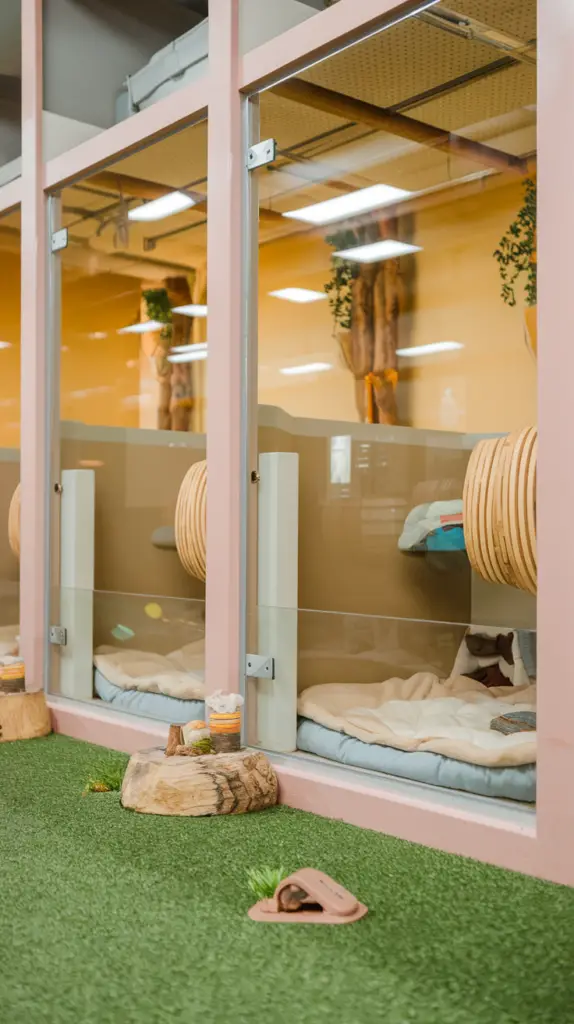
These luxurious touches show that every animal deserves comfort, even during their stay at the shelter.
4. Interactive Volunteer Zones
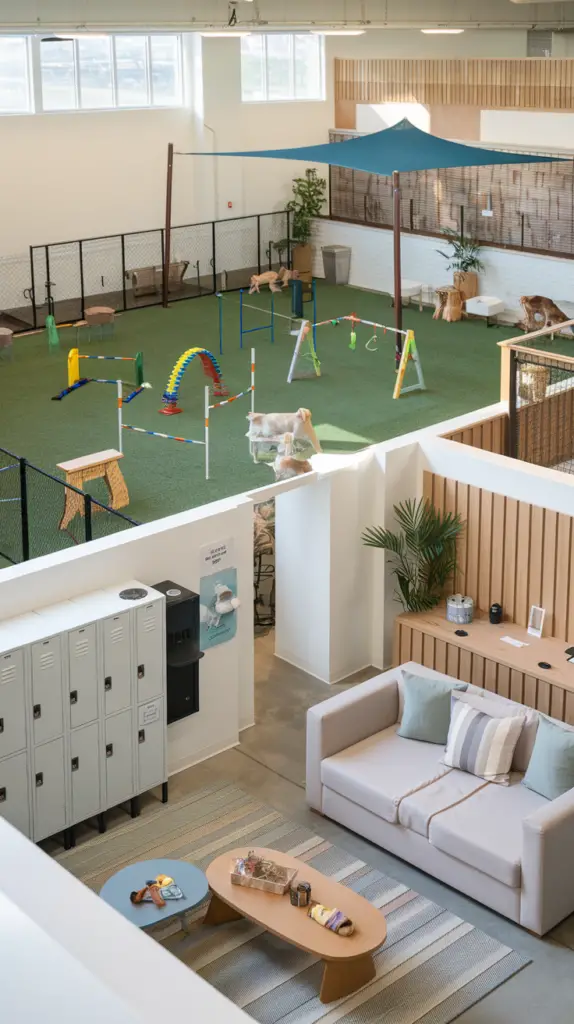
Design dedicated areas where volunteers can interact with animals while helping with daily tasks. Create play zones equipped with toys, agility equipment, and shaded areas for outdoor bonding. Add a cozy lounge with lockers, a coffee station, and charging docks to keep volunteers comfortable.
These interactive zones encourage more community involvement and make volunteering a rewarding experience. Highlight the value of these spaces to attract more helpers and maintain a strong volunteer network.
5. Themed Adoption Rooms
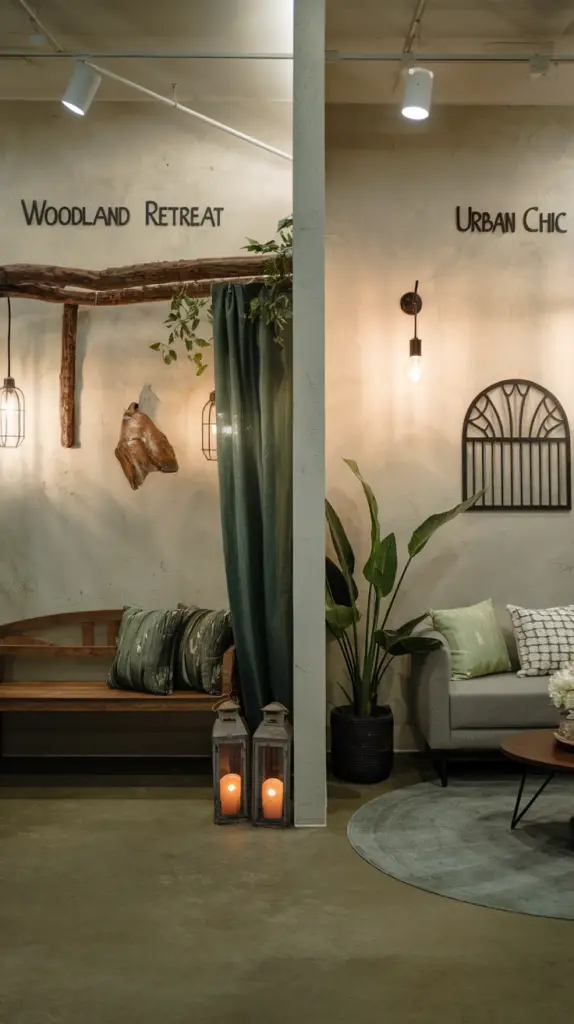
Themed adoption rooms can make the adoption process memorable. Create cozy spaces inspired by themes like “Woodland Retreat” or “Urban Chic.” Use unique furniture, textured walls, and soft lighting to create a warm atmosphere.
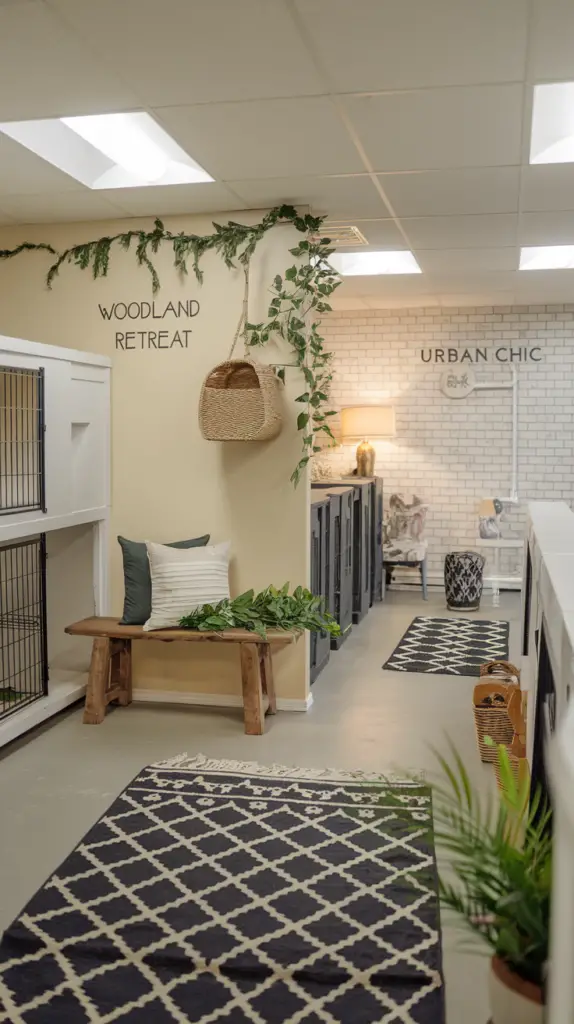
Personalize each room with pet-specific information or fun decorations. These themed spaces make adopters feel at home while imagining their lives with their new furry family member.
6. Outdoor Play Areas
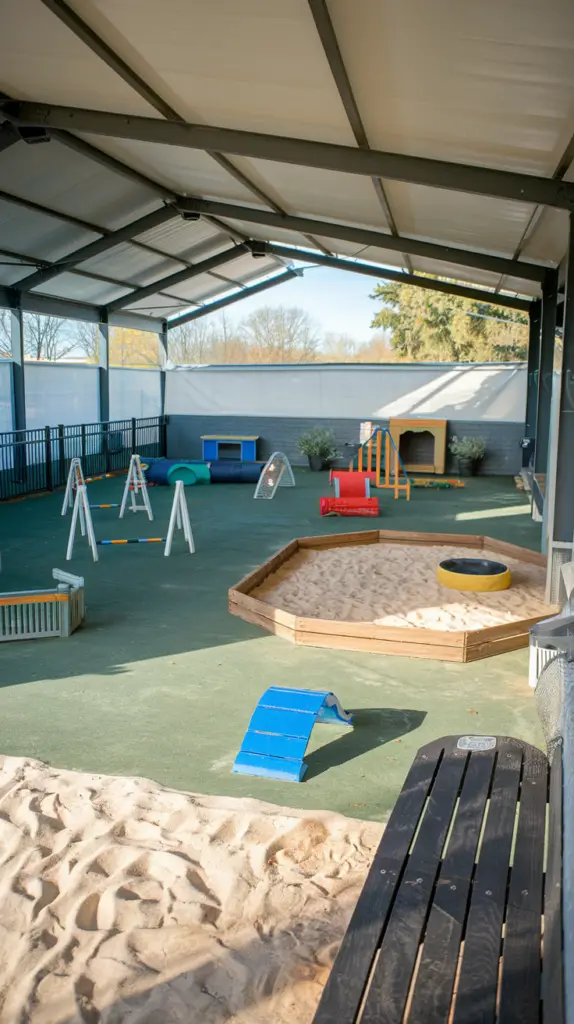
Spacious outdoor play areas provide animals with essential exercise and socialization. Include agility courses, sandpits, and shaded relaxation zones for varied activities. Use durable, pet-safe materials and ensure the area is securely fenced.
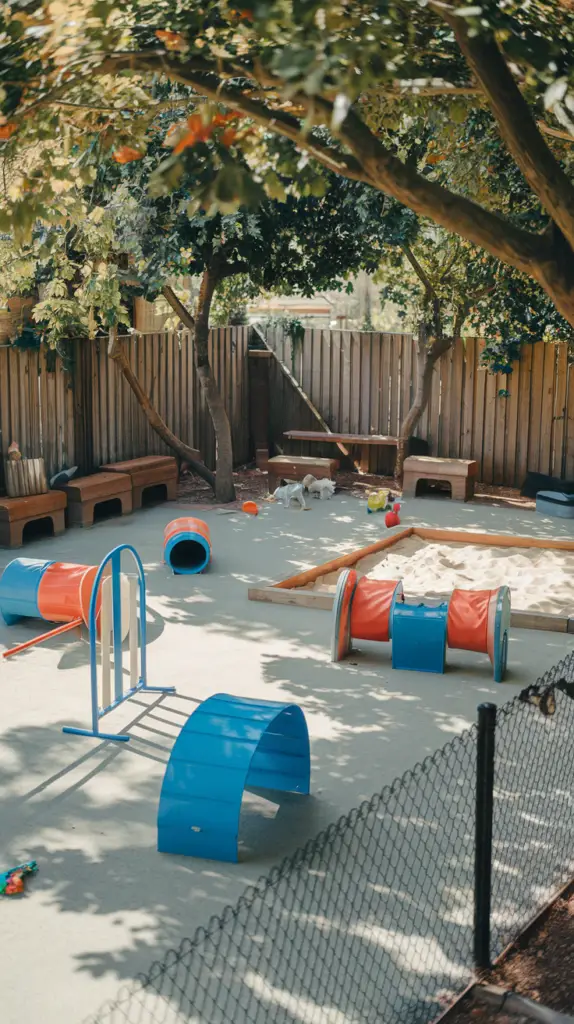
Enhancing outdoor spaces encourages potential adopters to envision a playful future with their pet while keeping shelter animals active and happy.
7. Community Education Rooms
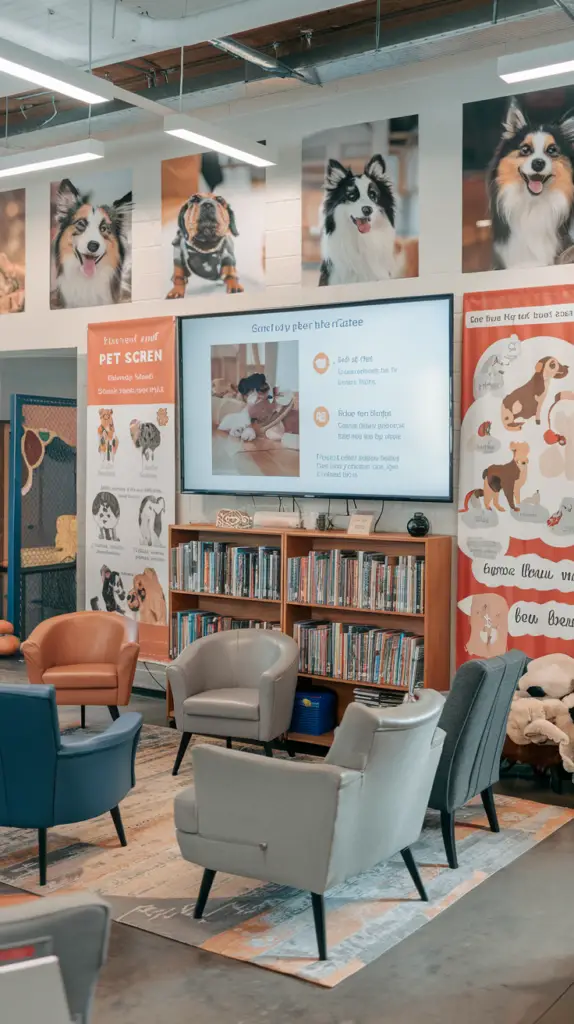
Design multi-functional spaces where visitors can learn about pet care, training, and adoption. Equip these rooms with AV technology for workshops, presentations, and community events. Decorate with educational posters, infographics, and a library of pet care books.
These rooms strengthen the shelter’s role as a community resource, fostering better relationships between humans and animals.
8. Donation Drop-Off Stations
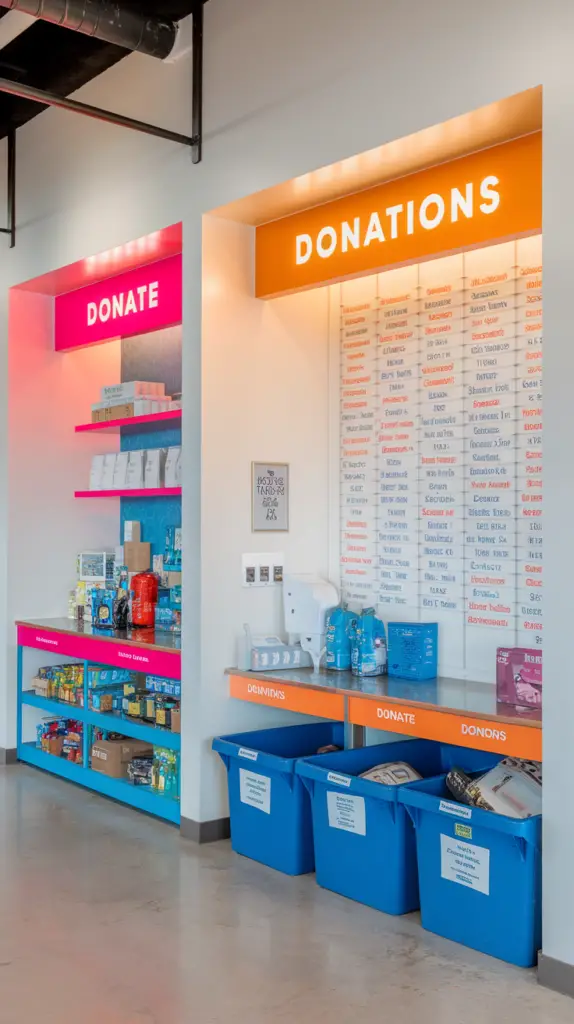
Create visually appealing donation drop-off stations to encourage community contributions. Use bright signage, shelves for goods, and easy-access bins for larger items. Include a gratitude wall to display donor names or messages.
Streamlining donation areas promotes generosity and ensures the shelter has the resources it needs to operate effectively.
9. Dog Sanctuary with Trails
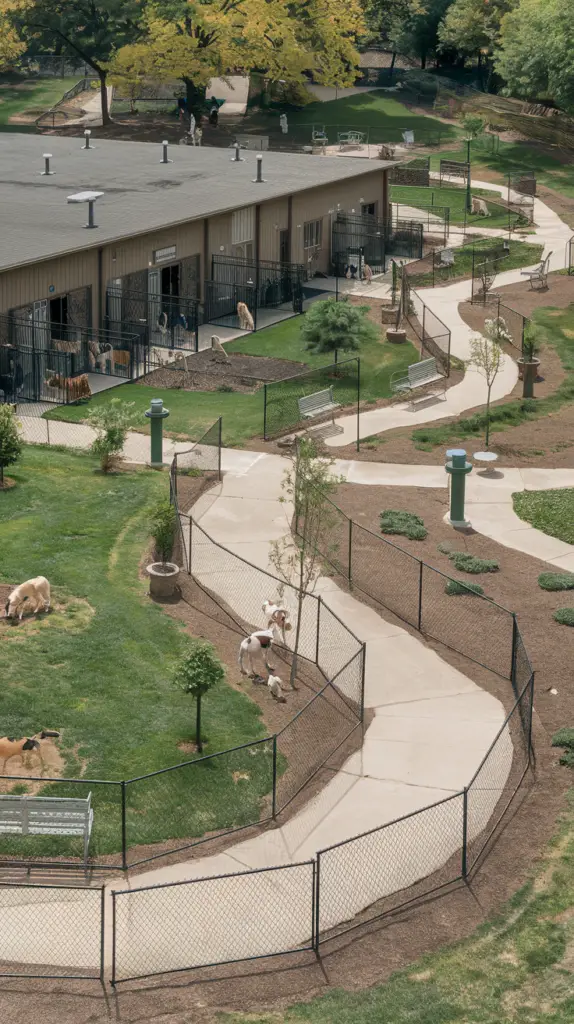
A dog sanctuary with walking trails offers a serene escape for dogs and visitors alike. Design shaded paths with benches, water stations, and scenic landscaping to encourage outdoor activities. Create separate areas for small and large dogs to ensure safety.
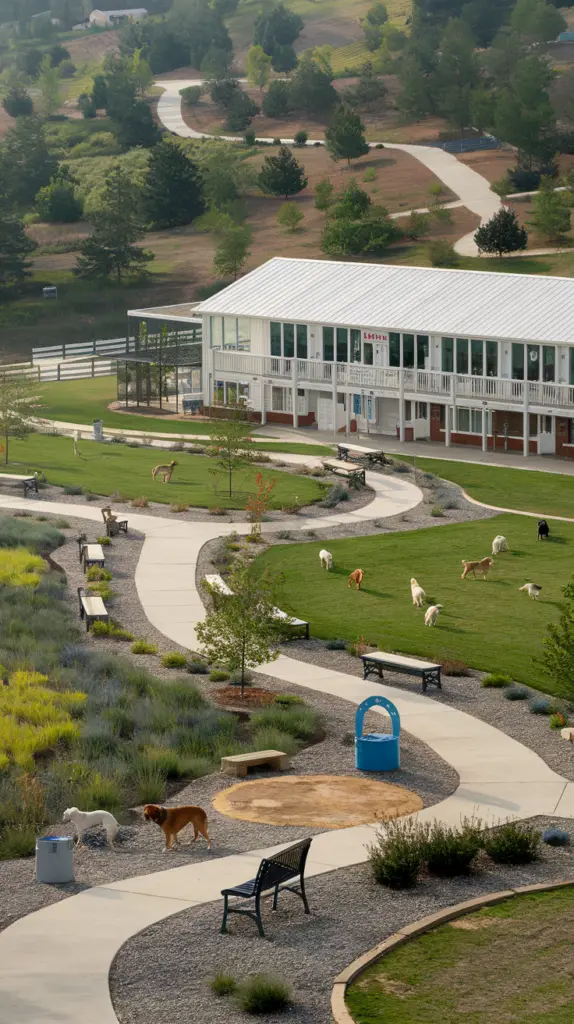
This design provides mental stimulation for dogs and creates a relaxing experience for adopters.
10. Animal Shelter with Branding Elements
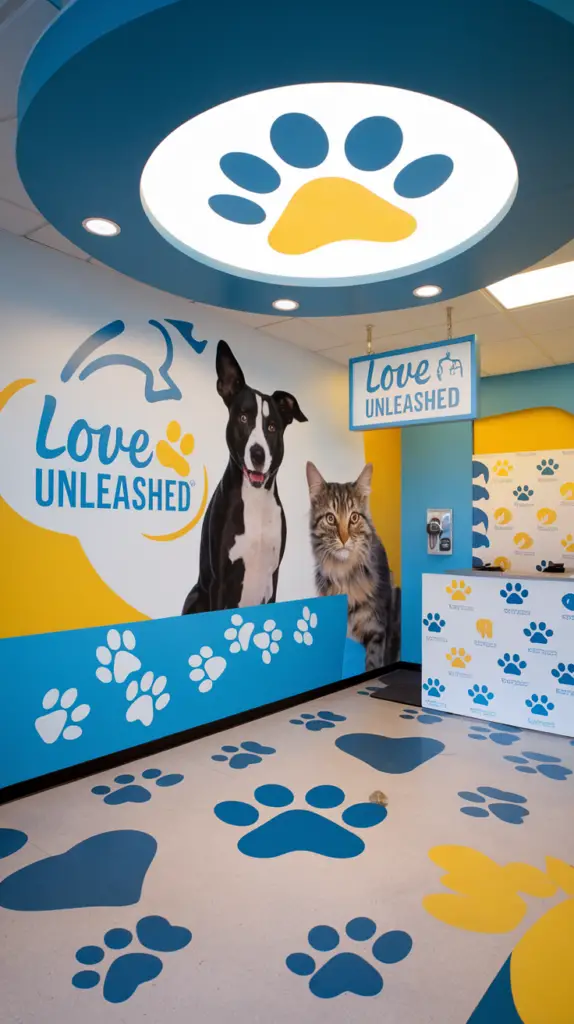
Incorporate strong branding elements like logos, murals, and signage throughout the shelter. Use cohesive color schemes and decor that reflect the shelter’s mission and personality. Add an adoption photo booth with branded backdrops for a memorable send-off.
These branding efforts enhance the shelter’s visibility and make it a recognized part of the community.
Final Thoughts
Designing an animal shelter that combines functionality and aesthetic appeal creates a space that fosters joy, hope, and comfort. These 10 ideas highlight innovative approaches to improve the lives of shelter animals while strengthening the connection with the community. From eco-friendly designs to volunteer-friendly zones, each concept demonstrates how thoughtful planning can make a significant difference. Whether you’re starting from scratch or renovating an existing shelter, these ideas provide the inspiration you need to create a haven that animals and humans will cherish.
